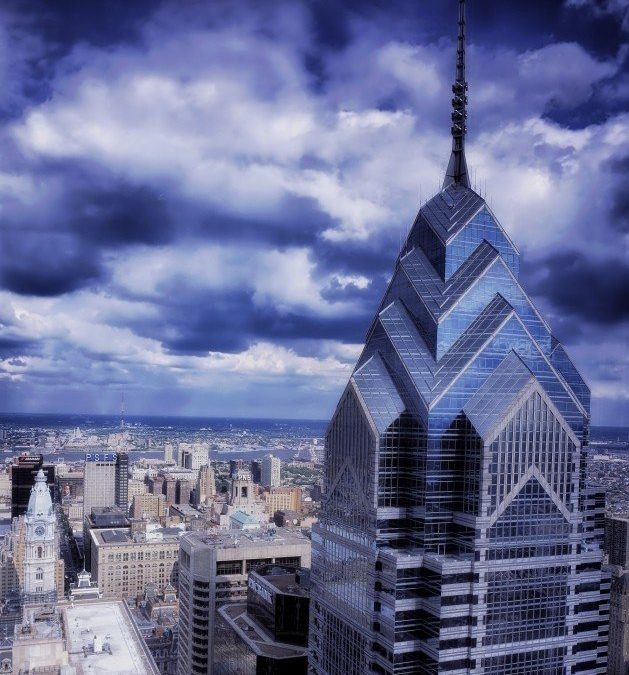“20% de descuento si compras antes del 25 de noviembre…”, “No te pierdas nuestras rebajas durante la semana del Black Friday”…Te suenan esta clase de mensajes ¿verdad? Noviembre comienza a dar sus últimos coletazos y con él, surge este término, tan recurrente y manido en los últimos tiempos. ¿Pero por qué se aplican descuentos a prácticamente todo a lo que sea susceptible de ser comerciado? ¿Qué significa Black Friday? ¿Cuándo y donde surge? Hoy te contamos todo lo que debes saber sobre este viernes negro.
ORIGEN
El Black Friday es una tradición americana que consiste en que los comercios bajan los precios de sus comercios durante el último viernes de noviembre, coincidiendo con el inicio de las compras navideñas. En la fecha todos coinciden con que es el último viernes antes de diciembre…¿pero y en el origen? ¿Cómo surge?
La primera vez que se empleó el término “Black Friday” fue durante una crisis económica surgida un viernes de septiembre en 1869, cuando el mercado bursátil entró en bancarrota. A esa jornada se le consideró un viernes negro.

Sin embargo hay cierta confusión y controversia sobre cómo surge esta costumbre: Para algunos, la aplicación del Black Friday como una tradición que rebaja los precios en las tiendas, surge en los pequeños comercios del mercado. Tras su inauguración y un posterior año de pérdidas, los números rojos dejaban paso a los números negros, coincidiendo con la época navideña y posterior a “acción de gracias”. Para otros, nace el 19 de noviembre de 1975 cuando el periódico New York Times acuñó el término “negro” para referirse al desbarajuste y el caos que se formaba en la ciudad tras el día de acción de gracias, producto de los descuentos que se habían producido durante la jornada posterior a la celebración de esa festividad americana.
Existe una tercera (y más extendida) corriente que lo acerca al mundo de los deportes, concretamente del Football (fútbol americano). Esta fecha es el día de mayor número de ventas en Estados Unidos, aunque el término lo acogió la policía de Filadelfia en 1960. Cada año, el sábado después a acción de gracias solía disputarse un tradicional partido en esta misma ciudad. Jugaban dos equipos, las academias navales y las academias militares. Una tenía la sede en Maryland y la otra en Nueva York, por lo que la capital del estado de Pensilvania era un punto intermedio entre ambas ciudades. Para el espectador, era un evento imprescindible en el que la ciudad se paraba para presenciarlo. A pesar de no ser un encuentro profesional (sino de categoría universitaria) generaba una expectación fuera de lo común. El día anterior al partido (viernes), las calles se llenaban aglomeraciones, de aficionados enfervorizados haciendo “previa” del choque un día antes. Aquello provocaba atascos, robos, delitos, accidentes…para la policía era un día desastroso, uno de los más temidos y que mayor cantidad de trabajo tenían que soportar. Por eso, el Cuerpo lo bautizó como un viernes negro.
Esto trajo consigo que los comerciantes, ante tal acumulación de individuos por las calles de Filadelfia, vieran oportunidad de negocio atrayendo a los aficionados a sus establecimientos con suculentos descuentos en sus precios. Y aunque terminó siendo una gran medida para sacar beneficios, las aglomeraciones se trasladaron a las tiendas, convirtiendo la jornada para los empleados en una auténtica pesadilla.
Esto se fue trasladando a otros lugares. El día después a acción de gracias se convirtió en una jornada de descuentos por todo Estados Unidos. Pero el término “Black Friday” tenía una connotación negativa y los comercios quisieron darle un toque más alegre, bautizándolo como “Big Friday”. Algo que no cuajó.
POPULARIDAD Y EXPLOSIÓN EN ESPAÑA
Durante los últimos años, con la irrupción del comercio electrónico, esta americana tradición ha llegado a la península ibérica en forma de rebajas con empresas como Apple, Amazon y demás tiendas online. Media Markt fue la primera compañía física en importar desde los “Estates” esta costumbre durante esta década. Al ser una tienda de electrodomésticos, donde predominan los aparatos electrónicos caros (televisiones, ordenadores, teléfonos…) Media Markt explota como ninguna el Black Friday así que hemos seguido su ejemplo y nos hemos apuntado también a la moda. Estas son algunas de las oportunidades que tenemos en Grupo Inmobiliario Exit.

WHERE AND HOW DOES BLACK FRIDAY COME?
November ends and with this situation, black Friday appears. What does Black Friday mean? Today we tell you everything you should know about this black Friday.
ORIGIN
The Black Friday is an American tradition that is that the stores lower the prices of their shops during the last Friday of November, coinciding with the start of Christmas shopping. On the date, everyone agrees that it is the last Friday before December … but what about the origin? How does it arise?
The first time the term “Black Friday” was used was during an economic crisis that emerged on a Friday in September in 1869, when the stock market went bankrupt. That day was considered a black Friday.
However there is some confusion and controversy about how this habit arises: For some, the application of Black Friday as a tradition that lowers prices in stores, arises in small shops in the market. After its inauguration and a subsequent year of losses, the red numbers gave way to black numbers, coinciding with the Christmas season and after “Thanksgiving.” For others, born on November 19, 1975 when the New York Times coined the term “black” to refer to the mess and chaos that was formed in the city after the day of thanksgiving, product of the discounts that had been produced during the day after the celebration of that American holiday.
There is a third (and more widespread) current that brings it closer to the world of sports, specifically Football (American football). This date is the day with the highest number of sales in the United States, although the term was hosted by the Philadelphia police in 1960. Every year, on Saturday after Thanksgiving, a traditional party was held in this same city. They played two teams, naval academies and military academies. One was headquartered in Maryland and the other in New York, making the state capital of Pennsylvania a midway point between the two cities. For the spectator, it was an essential event in which the city stopped to witness it. In spite of not being a professional meeting (but of university category) it generated an expectation out of the ordinary. The day before the match (Friday), the streets filled crowds, of enthusiastic amateurs doing “previous” of the crash a day earlier. That caused traffic jams, robberies, crimes, accidents … for the police it was a disastrous day, one of the most feared and that most work had to endure. For that reason, the Body baptized it as a black Friday.
This brought with it that the merchants, faced with such an accumulation of individuals through the streets of Philadelphia, saw a business opportunity attracting fans to their establishments with succulent discounts in their prices. And although it ended up being a great measure to make a profit, the crowds moved to stores, turning the day for employees into a real nightmare.
This was moving to other places. The day after thanksgiving became a day of discounts throughout the United States. But the term “Black Friday” had a negative connotation and the stores wanted to give it a more cheerful touch, calling it “Big Friday”. Something that did not work.
POPULARITY AND EXPLOSION IN SPAIN
In recent years, with the emergence of electronic commerce, this American tradition has reached the Iberian Peninsula in the form of discounts with companies such as Apple, Amazon and other online stores. Media Markt was the first physical company to import from the “Estates” this custom during this decade. Being an appliance store, where expensive electronic devices predominate (televisions, computers, phones …) Media Markt exploits like no other Black Friday so we have followed its example and we have also signed up for fashion. These are some of the opportunities we have in Exit Real Estate Group.
Visitas: 211


